TOP 5 Standing Yoga Balance Exercises
5 Standing Yoga Exercises which Improve Balance
Balance exercises help with balance, coordination and conscientious. By performing them regularly you can improve agility while decreasing possibility of injuries in normal daily activities.
Tree, Eagle, Warrior III, Half-moon and Dancer represent yoga balance exercises which will definitely improve balance, strengthen and stretch your body and make you more relaxed. Do those exercises separately or make it a part of your daily training routines. More about benefits of yoga!
Each of those exercises starts from position called “Mountain – Tadasana”, basic position for all standing yoga positions. In this upright positions where your feet are symmetric with your hips and your hands are on thighs, body weight falls evenly on all four points of the foot. Elongate entire body from the feet to the top of head and imagine that two vertical line passes through your profile – from ankles to ears.
Tree (Vrksasana)
vrksa = tree
In the upright standing “mountain” pose, place the entire weight of the body on full foot. Transfer the weight to the left leg and lift feet of right leg, bend it at knee and have it rely solely on the inside of the left thigh. Firmly push the foot on the inner thigh to avoid slid down.
In balancing the position of the wood, elongate your spine, lift your arms above your head and palms together.
Benefits:
- Stretches your inner thighs, groin and shoulders.
- Strengthens your thighs, calves, core and foot muscles.
- Strengthens your posture.
- Develops balance
- Relaxes your mind
- Increases your body and mind awareness.
Eagle (Garudasana)
Garuda = mythic king of the birds (Eagle as vehicle of Vishnu)
From the Mountain pose, bend both knees and cross your right thigh over the left and wrap the right foot behind the left lower leg. Keep your upper leg below the knee. Lower leg should remain firm and parallel with other leg.
Extend your spine and fox your gaze slightly forward.
Then, put both hands in front of you and wrap the left arm around the right arm. Cross your palms together and lift your elbows to shoulder height. To exit, slowly unwind the limbs, uncross the legs and come back to Mountain Pose.
Repeat on the other side, reversing arm and leg positions.
Benefits:
- Strengthens legs – thighs and ankles.
- Stretches your shoulders, arms and upper back.
- Develops focus and concentration
- Improves your balance and coordination.
Warrior III (Virabhadrasana III)
Virabhadra = the name of the warrior who is an incarnation of Shiva
Standing in Mountain Pose, step your left foot back two feet while keeping your body weight on your right foot. Make sure to keep your right toes facing forward.
Feel your right toes spread and discover an even grounding through the sole of your right foot. Contract your inner core muscles by drawing in the navel and waist and then inhale and lift your left foot as your lean your torso forward feeling a hinging motion at your hips.
Lower your torso to the right thigh and lean palms on his right knee. Firmly push the palms knee, gently lift the torso and rotate it slightly to the right. As your torso and left leg move into a parallel position with the floor, lengthening both legs without locking into the bottom knee.
Extend both arms in front of you parallel to the floor and intertwine the palms pointing up with his index finger. Transfer the center of gravity of the body on the front foot and push it firmly into the substrate. Then, synchronously extend the front knee, and lift the back leg parallel to the floor, so that the whole body in a long and a parallel line from head to foot.
Breathe slowly and stay here for five to ten breaths. To exit, inhale as you lift your chest and place your left foot back into “Mountain” pose.
Benefits:
- Strengthens the ankles and legs
- Strengthens the stomach
- Strengthens the shoulder and back muscles
- Improves balance and posture
- Improves memory and concentration
Half moon (Ardha Chandrasdana)
ardha = halfcandra = shining, translated as “moon”
From the Mountain pose , transfer the weight to the left leg, open outward, bend the knee and slowly begin to lower fuselage to the left. Rely left palm on the floor about a foot in front of the foot and the line corresponding shoulder.
Slide the left hand and foot firmly in the ground and extend your left knee, lifting your right leg parallel to the floor. Extend your legs in the air actively through the fifth, to remain stable.
Rotate the upper side of the fuselage to the right, but keep your right hip slightly forward. Try to reach the upper hand in the extension of the upper shoulder toward the ceiling. The head is in a neutral position with a view to the front.
Benefits:
- Strengthens the abdomen, ankles, thighs, buttocks and spine
- Stretches the shoulders, chest and spine
- Increases mobilityof neck and hip joints
- Improves coordination and sense of balance
- Reduces stress
- Improves digestion
Lord of the Dance (Natarajasana)
nata = actor, dancer, mimeraja = king
From the “Mountain” pose, put your weight to the left foot, bend the right knee, lift the right foot up towards the ceiling and back of the torso. Stretch thigh and your left arm parallel to the floor in front of the torso.
Benefits:
- Stretches the shoulders and chest
- Stretches the thighs and abdomen
- Streches the hip flexors
- Strengthens the legs and ankles
- Expands the chest and front body
- Improves balance
Take the time for yourself by practicing yoga everyday, and use exercises shown above to achieve balance of body and mind and reduce stress.


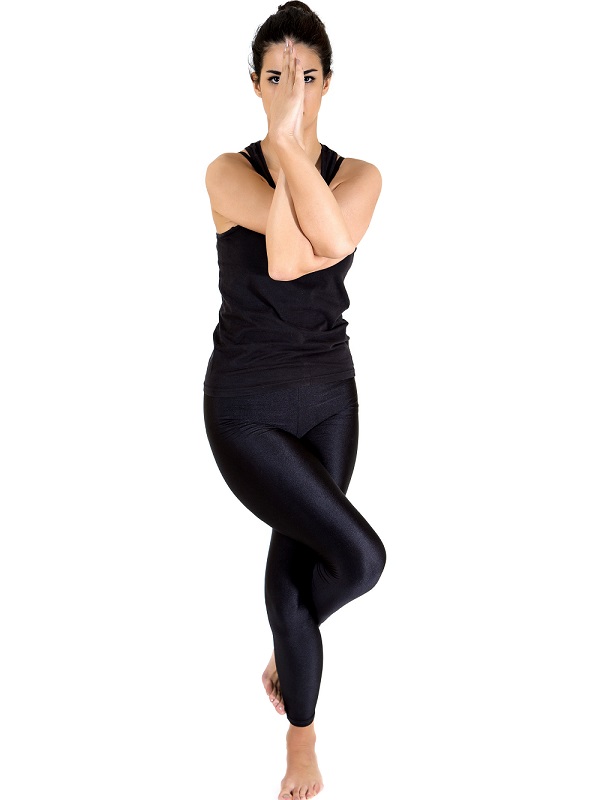
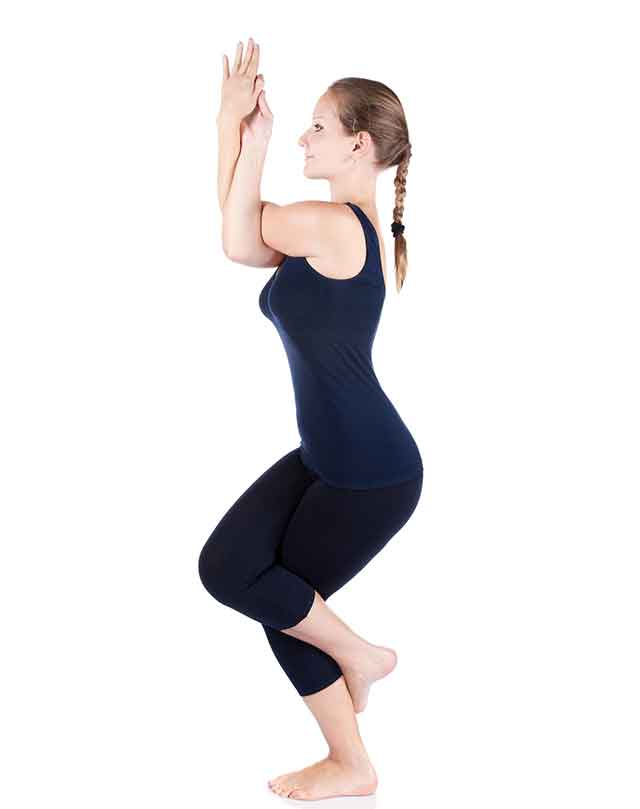
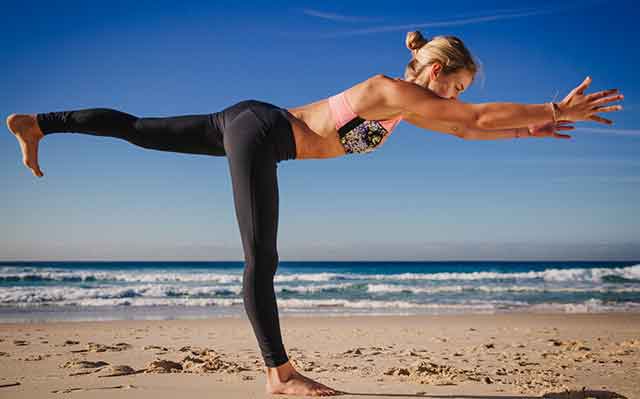
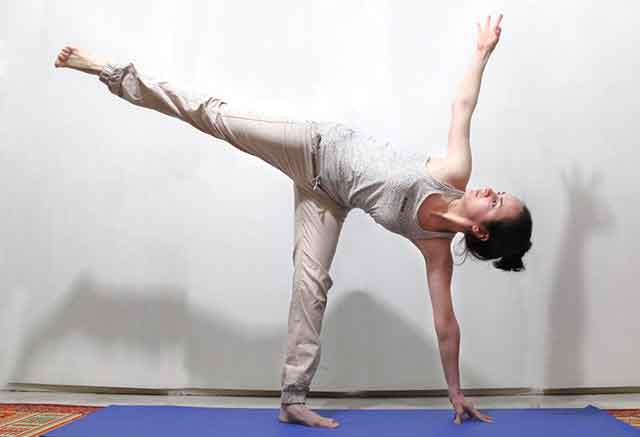
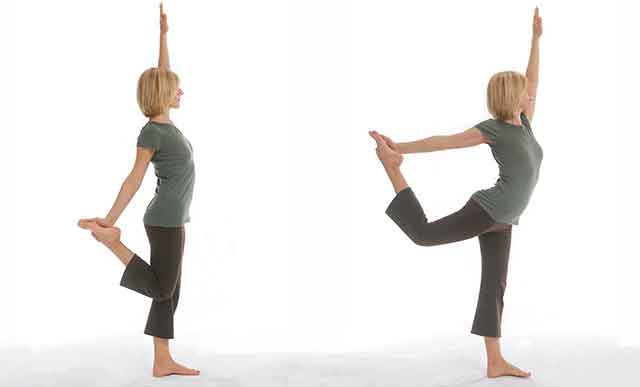
 Tweet
Tweet

